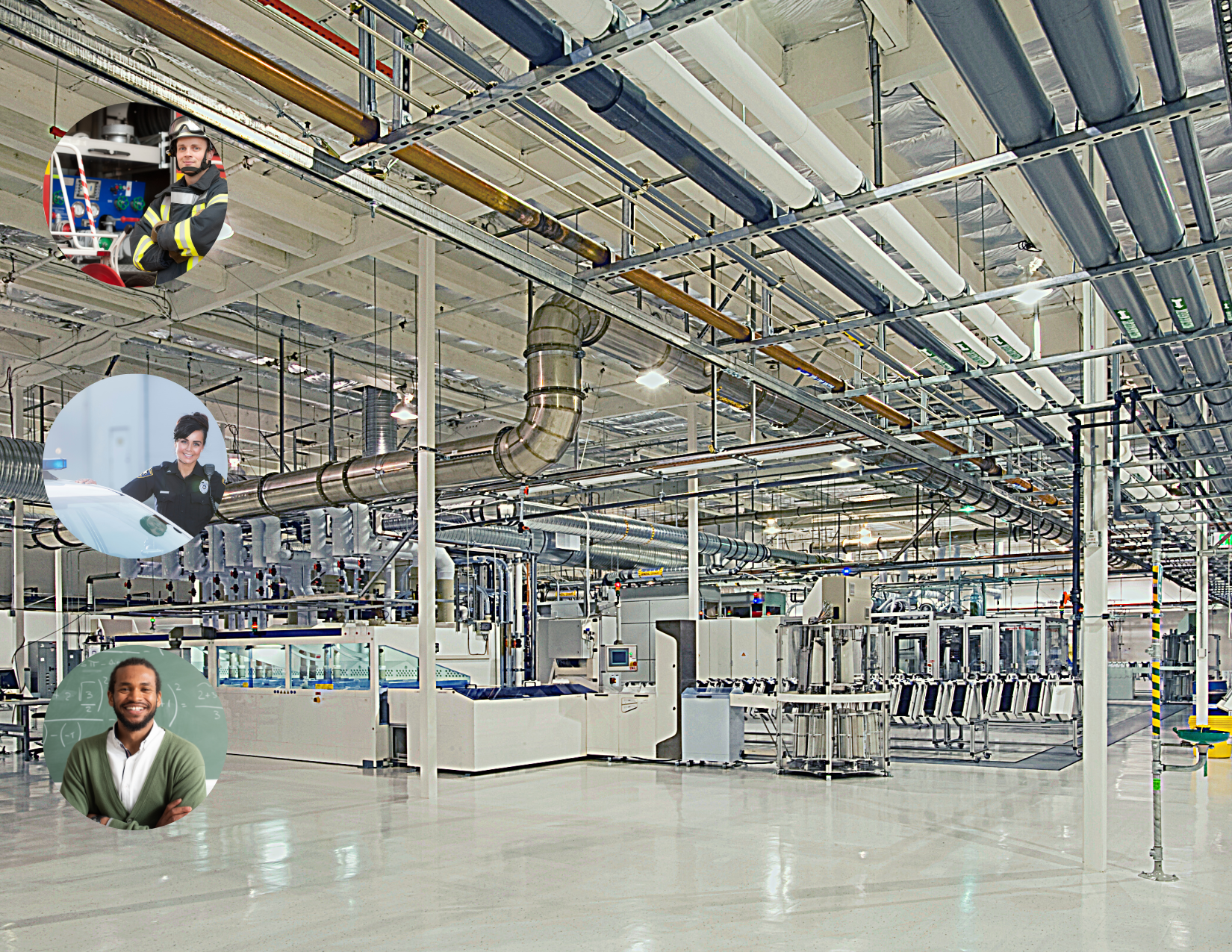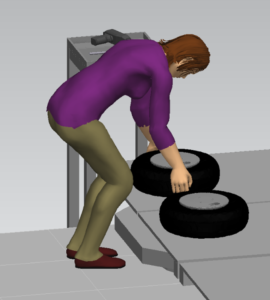Volume 6 | January 2023
QUARTERLY REVIEW
Human-Centered. Solutions Driven.
Leadership Roles for Plant Floor Success
By Carlos Real

When human labor is a significant component in a manufacturing process, improving the production system obviously depends, to a good extent, on functions linked to the operation on the production floor. Aside from the main function, who is the operator, functions like: front line supervisors, support engineering functions, technical functions, production, manufacturing and maintenance managers, material handling and logistics functions, heads of departments and up to the plant manager and other senior management or direction functions within operations, are integral to improving the system.
People performing these functions can fit in illustrative roles (not related to the production environment) depending on their day-to-day activities and mindset related to continuous improvement.
Function 1: The Firefighter
Oriented mainly at tackling deviations from the expected results on the operation’s performance. Quality defects, delays on the production schedule, late shipments, material shortages, priorities in scrap or accidents are some examples. Firefighters jump from problem to problem to “put out the fire”. An experienced firefighter on the production floor is skillful in organizing and executing reaction plans and working toward corrective actions. The value provided by the firefighter is in fixing problems. A person who is mainly focused on this type of role tends to deal with urgency regularly and is mainly concerned with the result (output) of the manufacturing system.
Function 2: The Police Officer
As we evolve along with the people we lead and interact with, we should be able to translate our learning, relying less on fixing problems and overall experience from dealing with situations on the production floor, to robust controls and standards to be implemented and followed in the manufacturing process.
Assuring process controls and standards are working as intended to prevent problems, requires us to observe, be vigilant and react to any deviations. These activities are like those of a police officer. In the same way stopping at a stop sign when driving is a control to prevent car crashes and organize vehicle flow, we have standards to follow in our process to prevent different problems. And in the same way police will observe drivers and react to any skipping a stop sign, in the manufacturing process we need also to be a presence that continuously sends the message that standards must be followed without exception and promptly react to any deviation we find by reminding people of the expected behaviors. This will prevent problems in the output of our production process.
Performing planned and structured audits to confirm standards is an option but there are other alternatives to validate standards are being followed. There are amazing examples of how visual controls and other tools are successfully used around the industry, great practices which indicate, just by observing the process, if standards are being followed.
A manufacturing facility with industrial vehicle traffic, besides having pedestrian aisles clearly defined and a large STOP sticker in the floor at every intersection, implemented the standard of pointing left and right with the finger as you turn your head in the same direction to check no industrial vehicles are coming before crossing. This way it is easy to confirm that people look both ways when they are in an intersection and that they do it consciously.
Organizations that focus on avoiding deviations from standards as part of their culture are constantly trying to find ways to make standards easy to understand, apply and confirm.
Function 3: The Teacher
Even though finding ways to make it easy for the organization to confirm standards are being followed is of great importance, the stability of the production process cannot depend only on the level of vigilance you keep over people. An organization that intends to keep making progress towards the continuous improvement direction, needs to rely on people. Individuals on to the production floor should follow the agreed upon standards not because they will be sanctioned if they don’t, but because they truly believe that is the right thing to do.
A factor necessary to have people embrace a standard and make it part of his or her culture is to explain the reason why such standard is important. The leader must explain very clearly not only what the expectation of the behavior is, but also why it is important. Providing the background, sharing experiences, discussing the potential consequences to internal and external customers, asking for opinion and challenging people to openly discuss alternatives or downsides of the required behavior is a way to have people digest the requirement and find true sense in the conduct we are asking her or him to adopt. The standard should be followed because its value is understood, and we must be the teachers driving the understanding.
As a teacher, besides delivering knowledge, it is critical that our actions reflect those standards we are teaching. We should model the behaviors we ask from others. We send a powerful positive message when we walk the talk and a negative one when our actions don’t align with what we are asking from other members of the organization.
Being able to switch efficiently to any of these roles (Firefighter, Police Officer or Teacher), depending on the situation at hand, is a great way to contribute the organization’s stability and continuous improvement. We must, however, continue to be leaders by helping others grow with the understanding of the value that comes from following the defined standards, procedures and established rules. By helping others understand the value of behaving according to the organization’s principles, we can drive drive continuous improvement. This way we will be delivering knowledge and contributing to the cultural growth of the people around us and the central role will be that of a teacher.






 Why Sandalwood?
Why Sandalwood?


 We are a one-stop-shop for launching job rotation for any employer from conception to implementation. Our experts tailor our services to meet the needs of our customers by collaborating with them throughout the entire process. We do not offer cookie cutter solutions for job rotation because the needs of employers vary significantly.
We are a one-stop-shop for launching job rotation for any employer from conception to implementation. Our experts tailor our services to meet the needs of our customers by collaborating with them throughout the entire process. We do not offer cookie cutter solutions for job rotation because the needs of employers vary significantly. Why Sandalwood?
Why Sandalwood?



 Sandalwood is pleased to offer solutions above and beyond the traditional ergonomic assessments. With an in-depth knowledge of various digital human modelling software suites, integration and adoption to your health and safety programs has never been easier. Sandalwood is experienced in ergonomic program design as well as industry leaders in digital human modelling services. We have a diverse team that is able the leverage the results from the digital human model to provide in depth risk assessments of future designs and current state. Sandalwood is also able to pair these assessments with expertise and provide guidance on the best solution for you. Sandalwood is also on the forefront of emerging technologies and able to integrate Motion capture, Wearables, and extended or virtual reality into your ergonomic program.
Sandalwood is pleased to offer solutions above and beyond the traditional ergonomic assessments. With an in-depth knowledge of various digital human modelling software suites, integration and adoption to your health and safety programs has never been easier. Sandalwood is experienced in ergonomic program design as well as industry leaders in digital human modelling services. We have a diverse team that is able the leverage the results from the digital human model to provide in depth risk assessments of future designs and current state. Sandalwood is also able to pair these assessments with expertise and provide guidance on the best solution for you. Sandalwood is also on the forefront of emerging technologies and able to integrate Motion capture, Wearables, and extended or virtual reality into your ergonomic program.



